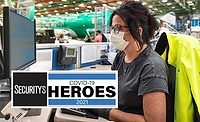Security Talk
The risk of human trafficking to the enterprise supply chain

oldsnowstorm / iStock / Getty Images Plus via Getty Images



Around the world, there are an estimated 40.3 million victims trapped in modern-day slavery, according to the International Labour Organization. One in four of those victims are children. In addition, victims’ rights groups say that human trafficking across the U.S. (and the world) rose during the COVID-19 pandemic.
The U.S. National Human Trafficking Hotline, which only collects information from its hotline, has seen growth year over year in human trafficking situations, recording a 5% increase in reported cases between 2018 and 2019, for example.
But the numbers are difficult to get a handle on due to the nature of human trafficking; many crimes are never prosecuted, let alone reported. Countries or states reporting zero or low amounts of human trafficking offenses, for example, are merely reflecting data reported by local law enforcement or the justice system.
Aside from a moral obligation to seek out and report possible criminal behaviors such as human trafficking, organizations in any sector may face repercussions related to human trafficking, such as reputational damage, legal damage and supply chain damage, according to Lindsey Roberson, Director of Legal Engagement at the Human Trafficking Institute. The Human Trafficking Institute works all over the world to identify best practices for the prosecution of trafficking crimes, publish human tracking data, and help other countries identify and prosecute trafficking crimes.
“Frontline workers in any industry can certainly be briefed and trained on signs of trafficking,” Roberson says. But security leaders or those leaders within the enterprise that deal with risk and resilience, labor and safety, should also be looking at other areas to mitigate human trafficking and potential effects on the business, she says.
Taking a proactive approach to examining potential risks and liabilities within the supply chain in regards to human rights violations, human trafficking or other abuses, can save a company from financial or legal liabilities, but also help it avoid the look of impropriety that can cause consumers and others to place judgment on the organization and inflict irreversible reputational damage.
Roberson says proactive risk management programs within companies need to look at the entire supply chain and work toward making that supply chain completely transparent. Taking a look at your organization’s supply chain helps mitigate areas of possible complicity or areas that could open the company up to civil litigation based on the accusation of reckless disregard when it comes to human rights violations or forced labor.
Recently, for example, several large clothing manufacturers have been in the news for human rights abuses and forced labor accusations in factories that make some of the companies’ goods. While none have had to admit legal culpability thus far, public judgment could be just as damaging to a company that relies on consumer demand for its bottom line.
“Within the business itself, it’s important to know who is working in your workforce as well as in the organizations you are working with,” Roberson says. In instances of labor trafficking, for example, many times trafficked workers are working alongside people that are not being forced or coerced.
“It’s about awareness and transparency in the supply chain. Organizations can look at everything from recruitment to training, labor and safety and make sure that it is all well-vetted and well-documented, so you don’t expose yourself to liability or allow for the appearance of exploitation,” she says.
Roberson says that security leaders and other organizational leaders can look to experts to help create strategies surrounding transparency. Those organizations that are proactive enough to start the process now can mitigate potential risk or damage in the future. “This is the direction we are going, and companies that get ahead of their curve and are proactive can ultimately save their company from potential ruin. It’s due diligence in a proactive manner,” she says.
Looking for a reprint of this article?
From high-res PDFs to custom plaques, order your copy today!










